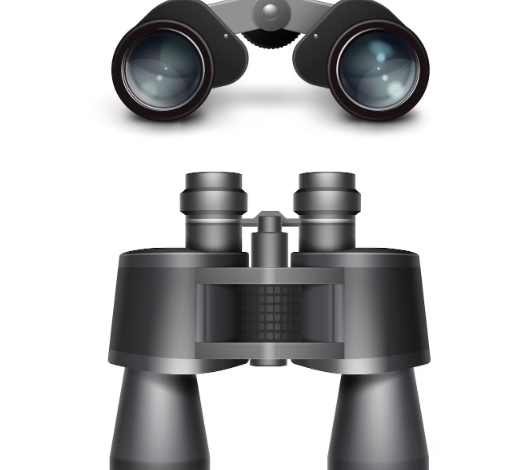A Shooter’s Guide to Scopes: Understanding Magnification, Reticles, and Use Cases

Understanding Magnification in Scopes
Magnification is a big deal when picking a scope. It tells you how much closer things will appear compared to just using your eyes. You’ll usually see it as two numbers, like “3-9×40”. The “3-9x” part is the magnification range, meaning you can zoom in from 3 times closer to 9 times closer. So, if something is 300 yards away, at 9x it looks like it’s only 100 yards away.
Fixed Power Versus Variable Power Scopes
Scopes come in two main flavors: fixed and variable. A fixed power scope has just one magnification level, like 4×32. It’s always 4 times closer. These are usually simpler, cheaper, and give you a consistent image. But, you can’t change the zoom like you can with a variable power scope. Variable power scopes let you adjust the magnification to fit the distance or target size.
Optimal Magnification for Different Shooting Disciplines
What magnification you need really depends on what you’re shooting. For long-range stuff like F-Class or ELR (Extreme Long Range), you want high magnification, like 25x or more. This helps you see tiny details way out there and make super precise adjustments. But for hunting, where you’re usually closer, a lower magnification like 4-16x or even 3-9x is often better. Too much zoom can make it harder to track moving targets.
The Impact of Magnification on Field of View
Magnification also affects your field of view, which is how much you can see through the scope. As you zoom in, the field of view gets smaller. That’s fine for stationary targets far away, but it’s not great for hunting where you need to see a wider area to spot and follow animals. Also, higher magnification makes small movements more noticeable, which can mess with your accuracy.
Think of it like this: a wide field of view is like looking at a landscape, while a narrow field of view is like looking through a telescope. Each has its place, depending on what you’re trying to see.
The Importance of Lens Size in Scopes
Objective Lens Diameter and Light Gathering
The objective lens, that’s the one at the front of your scope, plays a big part in how much light gets into the scope. More light usually means a brighter and clearer image, especially when you’re shooting in low-light conditions. Think early mornings or late evenings when you’re out hunting. The diameter of this lens is usually in the scope’s name, like “3-9×40,” where “40” is the diameter in millimeters. Bigger isn’t always better, but it often helps.
Balancing Lens Size with Budget and Use
Okay, so bigger lenses let in more light, but they also make the scope bigger and heavier. That can be a pain if you’re hiking all day. Plus, bigger lenses cost more. So, you have to think about what you’re really going to use the scope for. If you’re mostly shooting at a range in good light, you might not need a huge objective lens. But if you’re hunting in the woods at dawn, that extra light-gathering ability can be a lifesaver.
Here’s a quick table to give you an idea:
| Objective Lens Size (mm) | Pros | Cons |
| 30-40 | Good balance of size, weight, and light gathering. Affordable. | Might struggle in very low light. |
| 50+ | Excellent light gathering. Great for low-light conditions. | Bulky, heavy, and more expensive. May require higher scope mounts. |
It’s easy to get caught up in the idea that you need the biggest, most expensive scope out there. But really, think about your needs. A smaller, lighter scope might be a better choice if you value portability and don’t often shoot in low light. Don’t overspend on features you won’t use.
Modifications for Larger Objective Lenses
If you do decide to go with a scope that has a big objective lens, you might need to make some changes to your rifle. A larger lens often means you need higher scope mounts so the scope clears the barrel. You might also need to consider cheek risers to get a good cheek weld on the stock. It’s all about making sure the scope is comfortable and functional for you.
Here are a few things to consider:
- Scope Mount Height: Make sure the scope clears the barrel. You don’t want it touching!
- Cheek Weld: Can you comfortably see through the scope? A cheek riser might help.
- Rifle Balance: A heavy scope can change the balance of your rifle. Be aware of this.
Exploring Different Types of Scope Reticles
The reticle inside your scopes is super important. It’s what you actually use to aim, and there are a bunch of different kinds, each with its own strengths. Picking the right one can really improve your shooting, so it’s worth understanding the options.
Basic Crosshairs and Advanced Markings
Basic crosshairs are the simplest reticle you can get. It’s just two lines crossing in the middle. They’re easy to use and good for general shooting, but they don’t offer much help for things like bullet drop or windage. Advanced reticles, on the other hand, can have all sorts of extra markings. These might include lines or dots for estimating range, compensating for bullet drop at different distances, or accounting for wind drift. These markings can be super helpful, but they can also make the reticle look cluttered if you’re not used to them.
Bullet Drop Compensators and Windage Lines
Bullet Drop Compensators (BDC) and windage lines are designed to help you make accurate shots at longer ranges. BDCs have markings that show you where to aim to compensate for the bullet dropping as it travels downrange. Windage lines help you adjust your aim to account for the wind pushing the bullet left or right. These are especially useful for scopes used in hunting or long-range shooting.
Choosing the Right Reticle for Your Shooting Style
Choosing the right reticle really depends on what kind of shooting you do. For close-range shooting, a simple crosshair or red dot might be all you need. For longer ranges, a BDC or mil-dot reticle can be a game-changer. It’s also about personal preference. Some people like a clean, uncluttered view, while others prefer having all the information they can get right there in the scope. Consider these points:
- What distances do you typically shoot at?
- Do you need to compensate for bullet drop or wind?
- Do you prefer a simple or more complex reticle?
It’s a good idea to try out a few different reticles before you make a decision. Many gun stores or ranges will let you look through different scopes, so you can see what works best for you. Don’t be afraid to ask questions and get advice from experienced shooters. The right reticle can make a big difference in your accuracy and confidence.
Key Components of a Rifle Scope
Objective Lens Functionality
The objective lens is at the front of the scope, and it’s job number one is to gather light. The larger the objective lens, the more light it can gather, which is super important for seeing clearly in low-light conditions. Think of it like this: a bigger lens is like having bigger windows in your house – more light comes in, and everything looks brighter. The diameter of the objective lens is usually part of the scope’s name, like in a “3-9x40mm” scope, where “40mm” tells you the objective lens diameter. A larger objective lens can also affect the overall size and weight of the scope, so there’s a balance to strike.
Turrets for Adjustments
Turrets are those knobs you see on top and on the side of the scope. They’re used to adjust the reticle (the crosshair or aiming point) inside the scope. The top turret is usually for elevation adjustments (how high or low your shots will land), and the side turret is for windage adjustments (how far left or right your shots will land). Each click of the turret moves the reticle a certain amount, usually measured in MOA (minute of angle) or MRAD (milliradian). Knowing how much each click moves the reticle is key to zeroing your scope and making accurate shots at different distances. Some turrets are capped to protect them from accidental adjustments, while others are exposed for quick adjustments in the field.
Focus and Parallax Adjustment
Focus and parallax adjustments are all about getting a clear and accurate sight picture. The focus adjustment, often found on the eyepiece, lets you adjust the clarity of the reticle to match your eye. Parallax, on the other hand, is when the reticle appears to move relative to the target if your eye isn’t perfectly centered behind the scope. This can cause aiming errors, especially at longer distances. Many scopes have a parallax adjustment knob, usually on the side or objective lens, that lets you correct for this. Getting both the focus and parallax set correctly is super important for consistent accuracy.
Understanding these components is key to choosing the right scope and using it effectively. It’s not just about slapping a scope on your rifle; it’s about understanding how each part works together to help you hit your target.
Mounting and Zeroing Your Rifle Scope
Selecting the Correct Scope Mount
Choosing the right scope mount is super important. It’s not just about slapping any old mount on there; you need something that fits your rifle and your scope. There are a few main types to consider:
- One-piece mounts: These are great for stability and are usually pretty easy to install. They’re a solid choice if you want something simple and reliable.
- Scope rings: These are probably the most common. They’re versatile and work with a lot of different rifles and scopes. You’ll need to make sure you get the right height so your scope clears the barrel.
- Picatinny scope mounts: If your rifle has a Picatinny rail, these are a no-brainer. They offer a universal mounting platform and are super compatible with different accessories.
- Dovetail scope mounts: These are known for being simple and secure. They’re often found on rimfire rifles and airguns.
Make sure you check your rifle’s manual to see what kind of base it has. This will help you narrow down your options and make sure you get a mount that actually fits. Also, don’t cheap out on the mount. A good mount will keep your scope secure and help you maintain accuracy.
Step-By-Step Scope Mounting Overview
Mounting a scope can seem intimidating, but it’s really not that bad if you take it one step at a time. Here’s a basic overview:
- Choose the right mount: As we talked about above, make sure you have a mount that fits your rifle and scope.
- Position the scope: Place the scope in the rings or mount. Make sure it’s level and that you have the right eye relief (the distance between your eye and the scope).
- Secure the scope: Tighten the mounting screws. Don’t overtighten them! Use a torque wrench if you have one, and follow the manufacturer’s instructions. Some people use blue Loctite to keep the screws from coming loose, but check your scope’s manual first.
- Align the reticle: Make sure the crosshairs are perfectly vertical and horizontal. You can use a leveling kit for this.
- Boresighting: This is a preliminary step to get the scope roughly aligned with the barrel. It’ll save you a lot of time and ammo when you go to zero the scope.
- Zeroing the scope: This is where you fine-tune the scope so that the bullet hits where you’re aiming. We’ll talk more about this in the next section.
Boresighting and Zeroing for Accuracy
Zeroing your rifle scope is the final step in getting your rifle ready to go. It’s all about adjusting the scope so that the bullet hits where you’re aiming at a specific distance. Here’s how to do it:
- Boresight your rifle: You can do this with a laser boresighter or by visually aligning the scope with the bore of the rifle. This will get you close to zero.
- Set up your target: Choose a target at a specific distance, usually 100 yards. Make sure the target is well-lit and easy to see.
- Fire a group of shots: Shoot a group of three to five shots at the target. Try to be as consistent as possible with your aiming and trigger pull.
- Measure the group: Measure the distance between the center of your group and the bullseye. This will tell you how much you need to adjust the scope.
- Adjust the turrets: Use the windage and elevation turrets on the scope to adjust the point of impact. Each click on the turret usually corresponds to a certain amount of movement at 100 yards (e.g., 1/4 MOA per click).
- Repeat: Fire another group of shots and repeat steps 4 and 5 until your group is centered on the bullseye.
| Adjustment | Direction to Move Group | Turret Direction |
| Elevation | Up | Up |
| Elevation | Down | Down |
| Windage | Right | Right |
| Windage | Left | Left |
Zeroing can take some time and patience, but it’s worth it to have a rifle that shoots accurately. Remember to take your time, be consistent, and don’t get discouraged if it takes a few tries.
Understanding Scope Mounting Systems
Choosing the right scope mounting system is super important for getting the most out of your rifle and scope. It’s not just about slapping something on there; it’s about making sure everything is secure, aligned, and works well together. There are a few main types of mounting systems out there, and each has its own pros and cons.
Dovetail Mounting Systems
Dovetail mounts are one of the older, simpler designs. They feature a rail with a trapezoidal shape, and the scope rings or mount slide onto this rail and are tightened down. They’re often found on rimfire rifles and airguns, but you’ll see them on some centerfire rifles too. The big advantage is their simplicity and relatively low cost. However, they might not be the most robust option for larger scopes or heavier recoil.
Weaver Mounting Systems
Weaver mounts are a step up in terms of versatility and strength. They use a rail with a series of slots, and the scope rings or mount have a corresponding clamp that fits into these slots. This allows for some flexibility in scope placement. Weaver rails are pretty common, and there’s a wide range of rings and mounts available for them. They’re a good middle-ground option for many shooters.
Picatinny Rail Systems
Picatinny rails are the current gold standard for scope mounting. They’re similar to Weaver rails, but the slots are standardized to strict military specifications. This means that any Picatinny-compatible ring or mount should fit any Picatinny rail. Picatinny rails offer superior strength and versatility compared to dovetail and Weaver systems. They’re the go-to choice for tactical rifles, AR-15s, and any setup where you need a rock-solid mounting platform. They are also great for mounting accessories.
Picatinny rails are the most modern and versatile option. They are standardized, so you know that any Picatinny-compatible accessory will fit. This makes it easy to swap out scopes or add other accessories without worrying about compatibility issues. They are also incredibly strong, so they can handle the recoil of even the most powerful rifles.
Non-Magnifying Sighting Systems
Sometimes, you don’t need magnification. For close-quarters scenarios or when speed is paramount, non-magnifying sights offer a distinct advantage. They allow for rapid target acquisition and a wide field of view, making them ideal for dynamic shooting situations. Let’s explore some popular options.
Holographic Sights for Close Quarters
Holographic sights use a laser to project a reticle onto a lens, creating an image that appears to float in front of the shooter. This technology allows for a very wide field of view and minimal parallax, meaning the point of aim remains consistent even if the shooter’s head isn’t perfectly aligned behind the sight. They’re great for fast target transitions and engaging moving targets at close range. The downside is they typically require batteries and can be more expensive than other options.
Red Dot Sights for Rapid Target Acquisition
Red dot sights are probably the most common type of non-magnifying optic. They project a simple red (or sometimes green) dot onto a lens. The simplicity is the key. You put the dot on the target and shoot. Many shooters like the aimpoint sights for their durability and long battery life. They are great for quick target acquisition, especially in dynamic shooting scenarios. They are also relatively inexpensive, making them a good option for beginners.
Benefits for Instinctive Shooting
Non-magnifying sights really shine when it comes to instinctive shooting. Because you’re not looking through a magnified image, you maintain better situational awareness. This allows you to react more quickly to changing circumstances and engage targets more naturally. It’s all about speed and awareness.
Using non-magnified optics can significantly improve your speed and situational awareness in close-quarters engagements. The simplicity of these systems allows for a more instinctive shooting style, making them a valuable tool for both recreational and professional shooters.
Frequently Asked Questions
What does magnification mean on a scope?
Magnification tells you how much closer an object appears through the scope. For example, a 10x scope makes things look 10 times closer than they would to your bare eye. The right magnification depends on what you’re shooting and how far away your target is. For close-up shooting or quick action, lower magnification is better because it gives you a wider view. For really far shots where tiny details matter, higher magnification helps a lot.
Why is the objective lens size important?
The objective lens is the big lens at the front of your scope. Its size, measured in millimeters, affects how much light gets into the scope. A bigger objective lens lets in more light, which means a brighter and clearer picture, especially in dim conditions like dawn or dusk. However, bigger lenses can make a scope heavier and sometimes require special mounts.
What is a reticle and why are there different kinds?
A reticle is the aiming pattern you see inside your scope, like crosshairs or dots. It helps you aim accurately. Some reticles are simple, while others have extra marks to help you guess how much to adjust for things like bullet drop (how much your bullet falls over distance) or wind. Choosing the right one depends on your shooting style and what kind of shooting you do.
What’s the difference between mounting and zeroing a scope?
Mounting is putting the scope on your rifle, and zeroing is making sure where you aim is where the bullet actually goes. First, you pick a mount that fits your rifle and scope. Then, you carefully attach the scope, making sure it’s straight and at the right distance from your eye. Zeroing involves shooting at a target and adjusting the scope’s dials (turrets) until your shots hit exactly where you’re aiming, usually at a specific distance like 100 yards.
What is parallax and how do I adjust for it?
Parallax is a trick of the eye where your reticle might seem to move off the target if your eye isn’t perfectly centered behind the scope. This can cause you to miss, especially at longer distances. Many scopes have a parallax adjustment knob that lets you fix this. You turn the knob until the reticle stays still on the target no matter how you move your head slightly.
Are there scopes that don’t magnify?
Yes, there are sights that don’t magnify, like red dot sights and holographic sights. These are great for shooting at close range or when you need to aim very quickly, such as in self-defense or competitive shooting. They project a bright dot or image that helps you aim fast, and you can often use them with both eyes open, which gives you a wider view of your surroundings.




